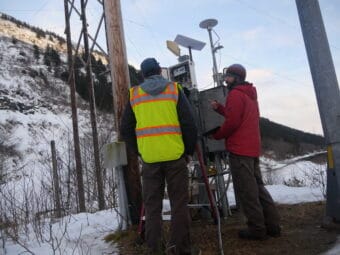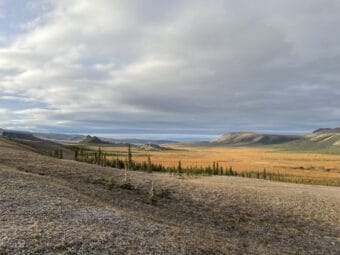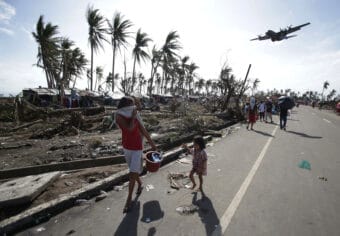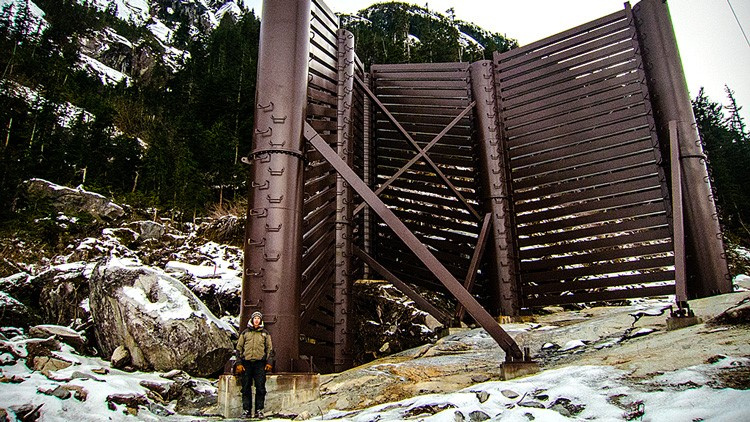
The avalanche danger has gone down, from extreme to considerable, in downtown Juneau this week. But that still leaves a risk of avalanches, especially along the transmission line that supplies a large portion of Juneau’s hydroelectric power.
Mike Janes is an avalanche forecaster for Juneau’s electric utility, Alaska Electric Light and Power. He said — when the weather allows — they routinely fly over the transmission line to the Snettisham Hydroelectric Project about 28 miles southeast of Juneau.
“One of the main differences with Snettisham is that we get two to four times the precipitation down there that we get in town,” Janes said. “So, things stack up a lot quicker. The storms are more intense and more potent, and all that.”
Because the transmission line’s towers are located in avalanche terrain, Janes said they look for recent avalanches and clues of potential slides yet to come.
The utility’s avalanche mitigation work and modifications started after an avalanche destroyed three towers in April 2008. Another avalanche in January 2009 hit one of the same towers that was destroyed the year before.
Three of the towers located in an avalanche path now have diversion wedges constructed around them. They are basically giant steel structures intended to deflect most of an avalanche away from the base of a tower.
“They’re bolted to the mountain with long rock bolts and rods. And yeah, they’re pretty beefy,” Janes said. “These columns are four feet in diameter, 40 feet tall, and everything had to be lifted in with a heavy lift helicopter.”
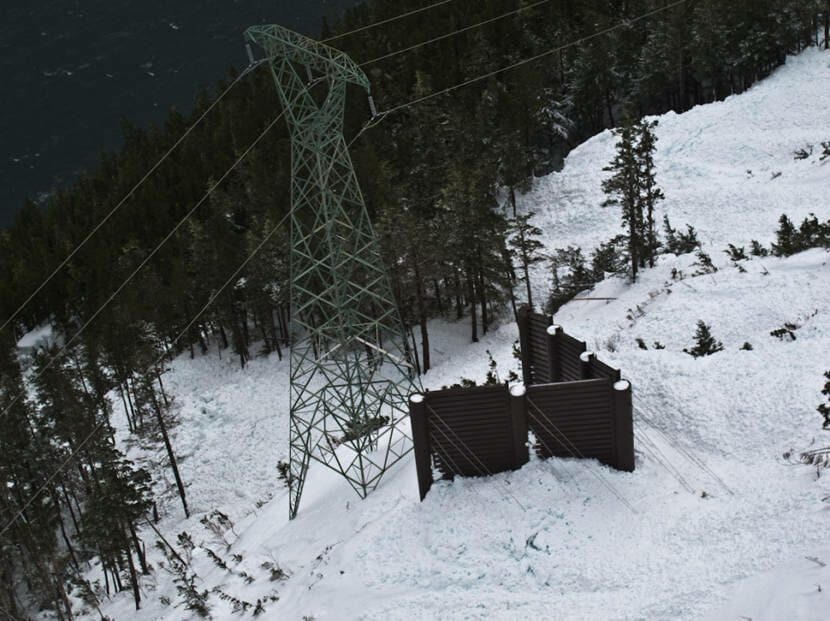
In addition, a tower near an avalanche path was strengthened while another was simply removed. Parts of the transmission line along nearly a two-mile stretch have been modified to break away in the event of an avalanche. That’s so a falling tower doesn’t pull down other nearby towers.
Part of an avalanche forecaster’s work is avalanche control or triggering small avalanches before they became much bigger ones. Janes said they used to drop explosives from a helicopter. But now they sling a device called a Daisy Bell, which makes a small explosion by mixing oxygen and hydrogen. It’s inexpensive to use, safer, and much more accurate.
“And it just blasts down onto the snow, which will collapse the weak layer that you’re trying to get at and then causes avalanche releases when that happens,” Janes said.
And, he said, the biggest avalanche cycles in the Juneau area typically happen in March and April.

